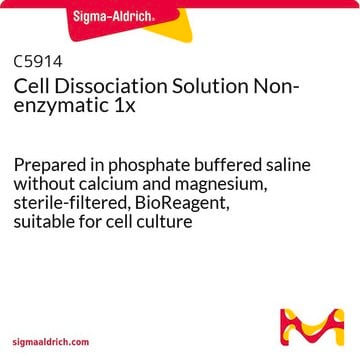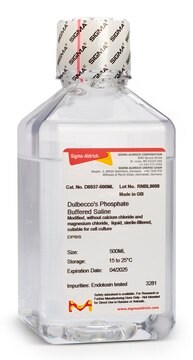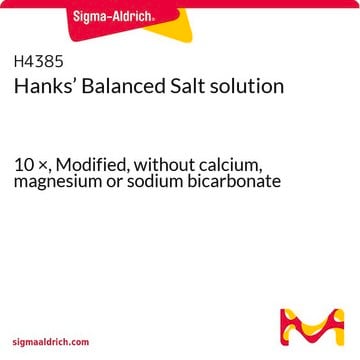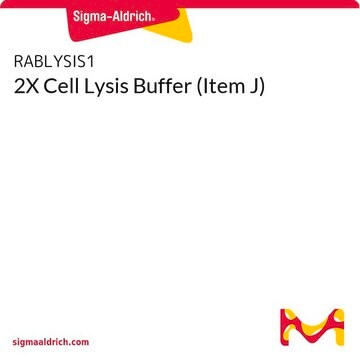This product contains EDTA as the major active component, which acts as a chelating agent for divalent cations to loosen cell–cell contacts but does not break down the extracellular matrix as trypsin does. Empirical testing is needed to determine if this approach is more effective. It is highly recommended to review the literature to determine if an EDTA-only dissociation method has been successfully used with the particular primary microglia preparation protocol.
推薦產品
品質等級
無菌
sterile-filtered
產品線
BioReagent
形狀
solution
濃度
1 ×
技術
cell culture | mammalian: suitable
pH值
6.5-7.5
運輸包裝
wet ice
儲存溫度
room temp
尋找類似的產品? 前往 產品比較指南
相關類別
儲存類別代碼
12 - Non Combustible Liquids
水污染物質分類(WGK)
WGK 1
客戶也查看了
-
Hi, I am working with primary microglia and it very tricky to dissociate. I usually dissociate them with 0.5% Trypsin for 7 min at 37˚C and still hard to collect them. May I know whether this reagent would be a better alternative? Thank you!
1 answer-
Helpful?
-
-
What is the concentration of EDTA in Cat#C5789? Thanks
1 answer-
The concentration of EDTA in this formulation is proprietary. Additional components include Sodium Citrate, Nitrilotriacetic Acid, and Glycerol in Hank's Balanced Salt solution. Should the concentration of EDTA be required, product E8008, EDTA 0.2% in DPBS, may be of interest. Both items are tested for cell dissociation. Please see the link below to review this product option:
https://www.sigmaaldrich.com/US/en/product/sigma/e8008Helpful?
-
Active Filters
我們的科學家團隊在所有研究領域都有豐富的經驗,包括生命科學、材料科學、化學合成、色譜、分析等.
聯絡技術服務











